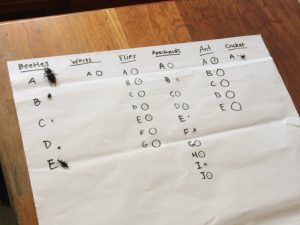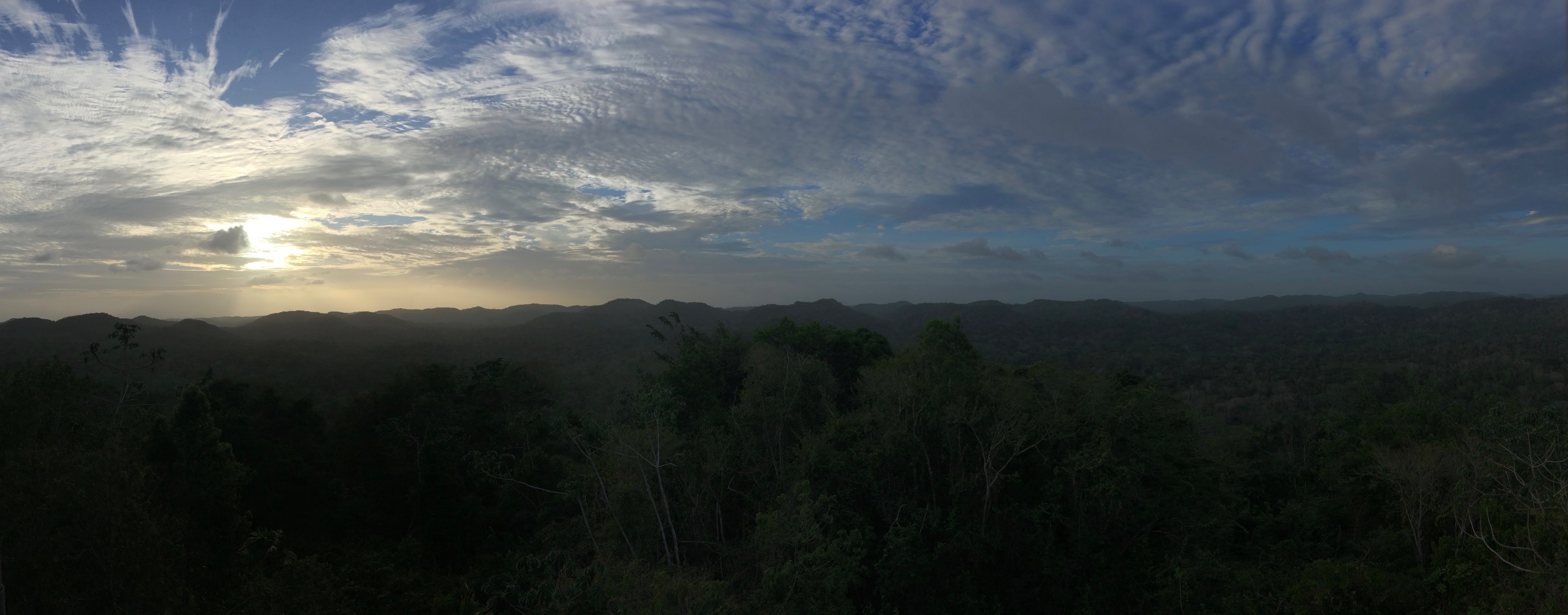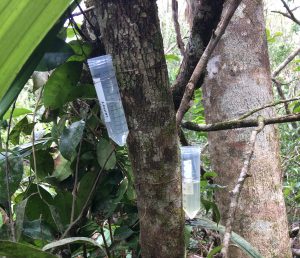DAY 13 – Today we set the bar high for future EBIO 319 classes by having two lectures in the twilight/dark zone of a cave and another at the top of a bird observation tower overlooking the Chiquibul forest.
This morning we collected our pee traps and spent our time until lunch sorting and categorizing by morpho-species the arthropods that had fallen into our pitfall traps. Our data suggests that there is greater nutrient availability on the forest floor and greater arthropod diversity in the canopy.

In the early afternoon we were able to explore the cave near the station clearing. You could clearly see the modifications the Maya made to the cave, including alter-like structures covered in plaster and constrictions of openings. We saw a cave cricket, and a helmeted iguana at the entrance to the cave. On our way out, we saw a snake slithering up the wall. I’m becoming a big fan of caves.
In terms of bees, today was a pretty empty day. I checked in on the colony on the corner of the research station, which is some sort of stingless bee. Tomorrow, when we retrieve the camera traps, I’m planning on carrying the filter paper for the entire hike. It’s my last chance to see an orchid bee!
To finish off a good day, we hiked up a steep hill to a bird observation tower. The view was incredible. Therese talked to us about her research and her experiences as a graduate student which was really cool, especially because the sun was setting over the mountains behind her.

To get back to LCRS, we took a short night hike through the forest. We saw some gnarly bugs, like a huge cockroach with a sticky rear end and a longhorn beetle. We also saw a scorpion that was phosphorescent underneath a purple light.
I’m glad we packed a lot into today, time is running short!

